Reprogramming Manufacturing: A Journey from Engines to Algorithms
AI IN MANUFACTURING
4/13/20252 min read
The journey of human labor has witnessed a profound transformation over the centuries. What once demanded relentless physical effort and human stamina is now governed by fingertips, algorithms, and, increasingly, artificial intelligence. The Industrial Revolution marked the beginning of this shift when the combustion engine and complex machinery replaced the need for repetitive manual labor in factories, mines, and agriculture. The rise of steam and later internal combustion not only redefined productivity but also the role of human workers.
From Manual to Mechanical
In the early 19th century, factories started using steam engines to power looms, mills, and presses—machines that once required rows of workers now ran faster, longer, and with greater consistency. This mechanical intervention reshaped economies and societies, birthing new classes of skilled and unskilled labor and reducing dependency on pure physical effort.
The 20th century added electric motors, conveyor belts, and industrial robotics. Tasks that once took dozens of people could now be done by a single machine with minimal oversight. Workers moved from shop floors to control rooms. The role of humans shifted from doing to supervising—from muscle to mind.
The Present: Machines That Don’t Even Need Light
Fast forward to the present, and we are witnessing another leap in this industrial evolution. Manufacturing today doesn't always require human oversight or even light.
Take the example of China’s “dark factories”. These are fully automated manufacturing plants that run without human presence, often in complete darkness—because machines don’t need light to see. Instead, they rely on a sophisticated network of sensors, machine vision, and AI-based control systems. These lights-out factories not only reduce energy costs but also significantly cut down on human error, increase safety, and maximize efficiency.
This represents a new era where human presence is optional, not essential. Logistics, quality control, material handling, and even machine maintenance are being handled by interconnected systems—the Industrial Internet of Things (IIoT) paired with Artificial Intelligence.
The AI Age: From Observation to Autonomy
We now stand at the cusp of an AI-driven industrial renaissance. While the combustion engine once enabled humans to do more by removing physical constraints, AI removes cognitive constraints. Instead of programming machines with fixed instructions, we train them to learn, adapt, and decide.
From predictive maintenance in factories to autonomous quality checks, AI is no longer a novelty—it’s becoming the new standard. AI-enabled systems can detect anomalies in real time, learn from historical data, optimize workflows, and even suggest design changes. Human operators are evolving into system architects and machine collaborators, guiding fleets of intelligent agents to do the work once handled by entire departments.
What Lies Ahead: Industrial Intelligence
As AI matures, we’ll see the rise of factories that self-optimize. They will:
Adjust output based on real-time demand,
Source materials automatically based on supply chain conditions,
Collaborate across continents using cloud AI models,
And even simulate scenarios before making a decision.
This is not science fiction—it is the vision companies in China, Germany, and the U.S. are actively building. In essence, the workplace of the future may not be a place at all, but an intelligent, adaptive system that surrounds and supports the human mind.
At InnoAIve, we believe the transition from combustion to cognition is the biggest leap yet. We aim to be part of this journey—not just by watching it unfold but by shaping it.


